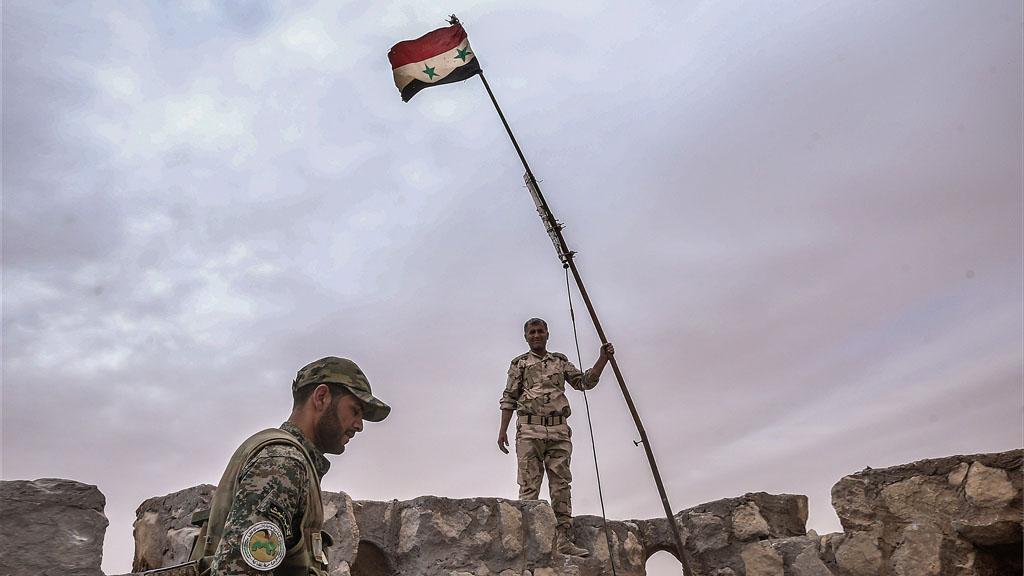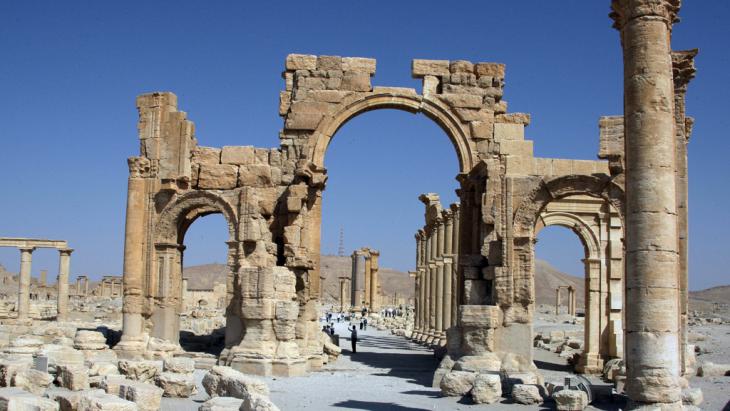A dirty double-cross

The reclaiming of the ruined city of Palmyra by the Syrian army, which the Assad regime is styling as a great triumph, has been greeted with mixed feelings in opposition circles and in the Arab world as a whole. Behind this scepticism is an almost-forgotten prehistory. Palmyra was namely already hotly contested back in 2013, two years before its fateful capture by IS terrorist militia. In the course of the hostilities between government troops and rebel units, several of the ancient architectural monuments were damaged by shells, with both sides blaming the other for the destruction.
When the ruins were then taken in May 2015 by the jihadists of IS, who encountered remarkably little resistance, rumours circulated in the insurgent camp that Assad's troops had ceded the city without a fight – which Damascus vehemently denied. Now, Syrian opposition circles, still clinging to the conspiracy theory, are again alleging that the Syrian state is making common cause with IS in Palmyra.
Riyadh's henchman
No less a figure than Asaad al-Zoubi, one of the high-ranking representatives of the Syrian opposition at the talks in Geneva, has now claimed on the international Saudi television station Al Arabiya that both the capture and the evacuation of Palmyra were agreed between Damascus and IS.
The withdrawal of IS allows the regime to present itself as saviour of the world heritage site, thus gaining sympathy worldwide, says al-Zoubi. In this way the Syrian government allegedly hopes to improve its status in the negotiations on the future of the country. That the opposition leader al-Zoubi – once an officer in the Syrian army – would make such a claim on Saudi television comes as no surprise, however: many regard him as a henchman of Riyadh who will stop at nothing to discredit the Syrian rulers.

Anyone who believes in such conspiracy theories would certainly not be convinced to the contrary by the images recently leaked to the Arabic-language Russian television channel RT. These new photos don't jibe very well with the widely reported initial relief expressed by Maamun Abdulkarim, head of the Syrian Directorate-General of Antiquities and Museums (DGAM), that most of Palmyra's cultural treasures had survived IS occupation, meaning the ruined temple could soon be restored. Instead, they show a scene of total devastation wreaked by the jihadists in the Palmyra Museum.
The inhabited part of the city resembles a ghost town
Apparently, not one of the numerous stone statues and decorative reliefs from the various periods of the city has survived the barbarism intact. Explosives were obviously set off in several places in the building, blasting a huge hole in the roof.
Whether some of the sculptures were removed to be sold on the market for illegal antiquities, which the terrorists are adept at supplying, has not yet been determined. After the damage became public, the DGAM was forced to correct its initial assessment of the situation. At least part of the destruction can now be seen on its website, but not necessarily the worst of the damage.
This type of selective presentation can also be seen in the photographic documentation of the damage inflicted on Palmyra's medieval citadel by the recent skirmishes. Missing from the records of the DGAM are the images of explosions caused by Syrian and probably also Russian air strikes, to be found elsewhere on, for example, the Internet portal of the independent "Association for the Protection of Syrian Archaeology" (Apsa2011), which has in recent years meticulously documented the destruction of Syria's cultural treasures.
Official Syrian government sources will therefore hardly be willing to provide information on the disastrous consequences of the apparently high number of aerial bombings. This applies especially to the modern city of Palmyra, close to the ancient heritage site, which, according to the Arab media, currently resembles a ghost town.
Residents apparently fled the city in the days leading up to Palmyra′s recapture, fearing the ruthless bombing for which the Syrian – and now also the Russian – air forces have become notorious.
Joseph Croitoru
© Qantara.de 2016
Translated from the German by Jennifer Taylor